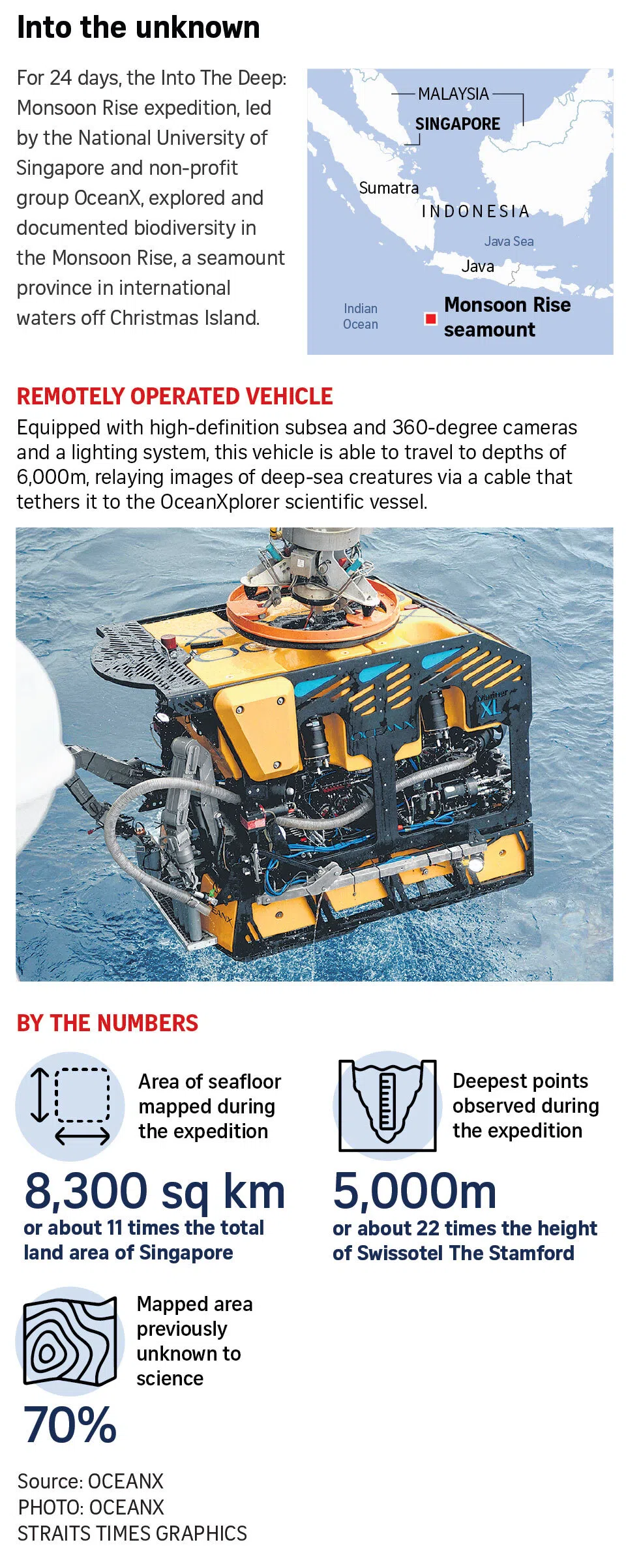NUS-OceanX expedition observes rare deep-sea life in natural habitat
Sign up now: Get ST's newsletters delivered to your inbox
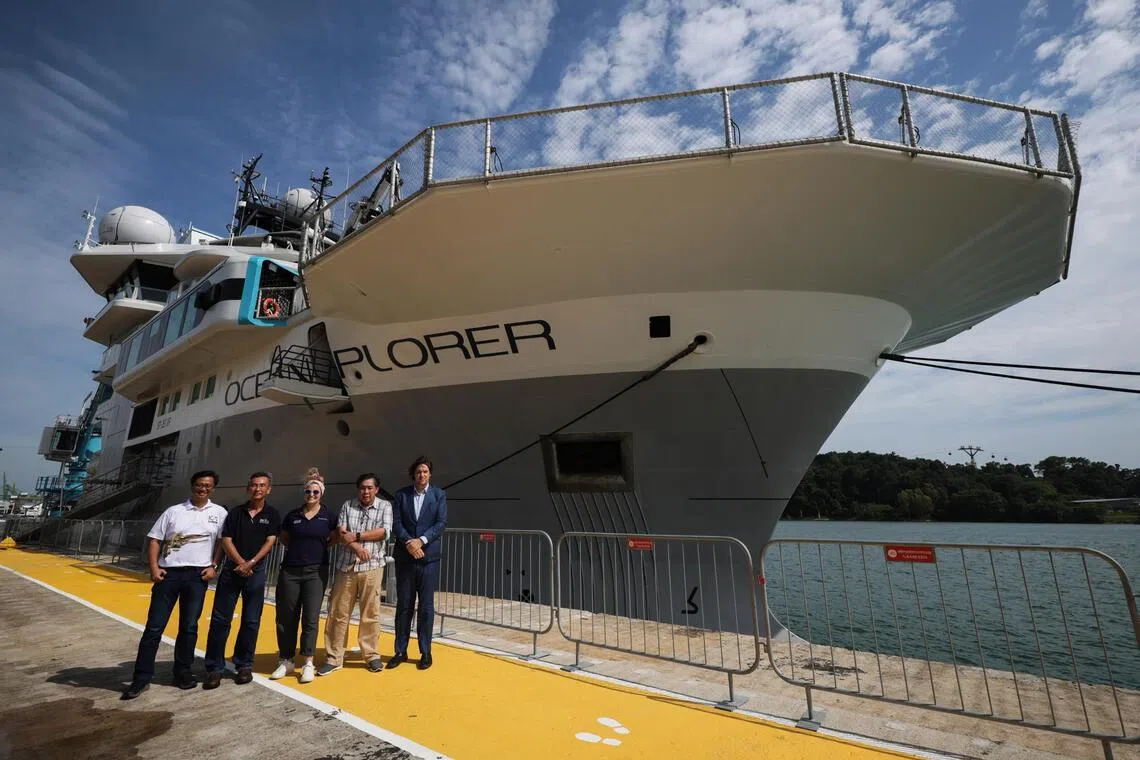
OceanX-NUS research team members (from left) Dr Jose Mendoza, Dr Tan Koh Siang, Ms Mattie Rodrigue, Professor Peter Ng and OceanX founder and co-CEO Mark Dalio, pictured in front of the OceanXplorer scientific vessel on Oct 29.
ST PHOTO: GIN TAY
Follow topic:
SINGAPORE – Deep-sea sharks with glowing bodies, known as lantern sharks, and chimaeras, a type of deep-sea fish related to sharks and rays, were some of the sights observed by a research team on board a scientific vessel during a 3½-week expedition to study a largely unexplored part of the eastern Indian Ocean.
Over 24 days, the Into the Deep: Monsoon Rise expedition mapped more than 8,300 sq km of seafloor, about 70 per cent of which had not previously been explored.
An initiative of the National University of Singapore (NUS) and OceanX, a US-based non-profit group that operates the OceanXplorer scientific vessel, the expedition explored Monsoon Rise, the seamount province in the international waters off Christmas Island.
The team, which comprised researchers from Singapore, other parts of South-east Asia and the Pacific, as well as the US, returned to port on Oct 28, docking at the Marina at Keppel Bay.
The 21-member research team included scientists from the NUS Tropical Marine Science Institute and the Lee Kong Chian Natural History Museum, in addition to researchers from NTU, as well as from Vietnam, Indonesia, Thailand and Fiji.
Members of the team spoke to reporters at a briefing, held at the Bleu restaurant at Keppel Bay on Oct 29, following their expedition.
Seamounts – underwater mountains with steep sides rising from the seafloor – are hot spots of marine life and biodiversity, said OceanX science programme director Mattie Rodrigue.
Such biodiversity contributes to more resilient ecosystems, she said, noting that this is particularly relevant amid the impacts of climate change.
“If we can map these areas, and if we can also see and visualise these areas, we have a better understanding then of how to protect these areas,” said Ms Rodrigue.
While the team initially anticipated exploring depths of some 4,000m below sea level, it was able to map areas even deeper at 5,000m below sea level.
Using a remotely operated vehicle equipped with high-definition cameras, tethered to the OceanXplorer by a cable, researchers were able to view deep-sea marine life in their natural habitats.
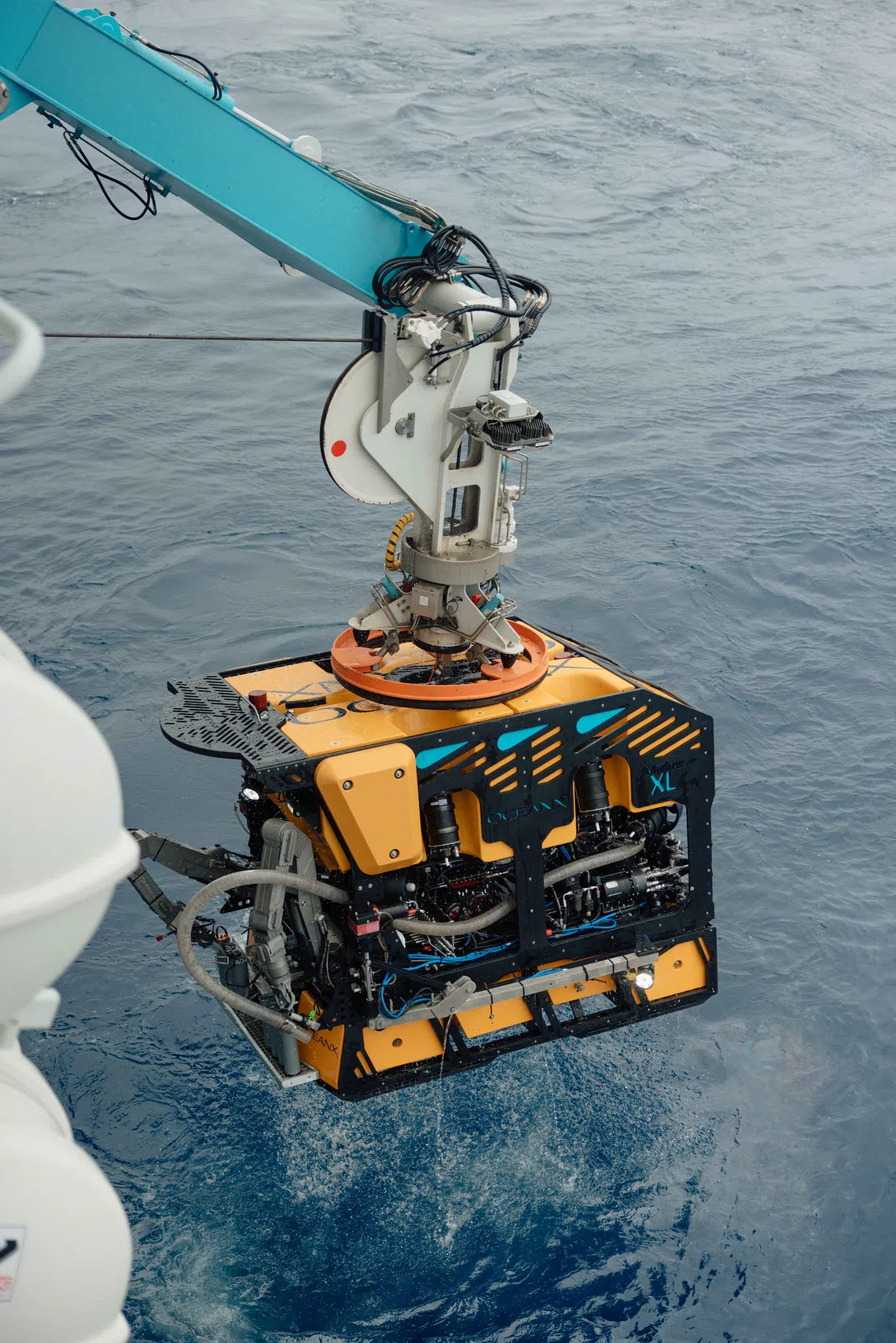
The remotely operated vehicle, equipped with high-definition subsea and 360-degree cameras and a lighting system, was used by researchers to capture footage of deep-sea marine life.
PHOTO: OCEANX
These included sea pigs – a species of sea cucumber that lives in the deep sea – as well as sleeper sharks, named for their slow swimming speeds.
Specimens of such deep-sea marine life are typically collected via dredging the sea floor, said Dr Jose Mendoza, a senior research fellow at the Lee Kong Chian Natural History Museum, noting however that such specimens are usually in a “very bad state” once they are brought to the surface.
Having high-definition images of these creatures can help better identify new species, as well as contribute to understanding of previously identified ones, he said.
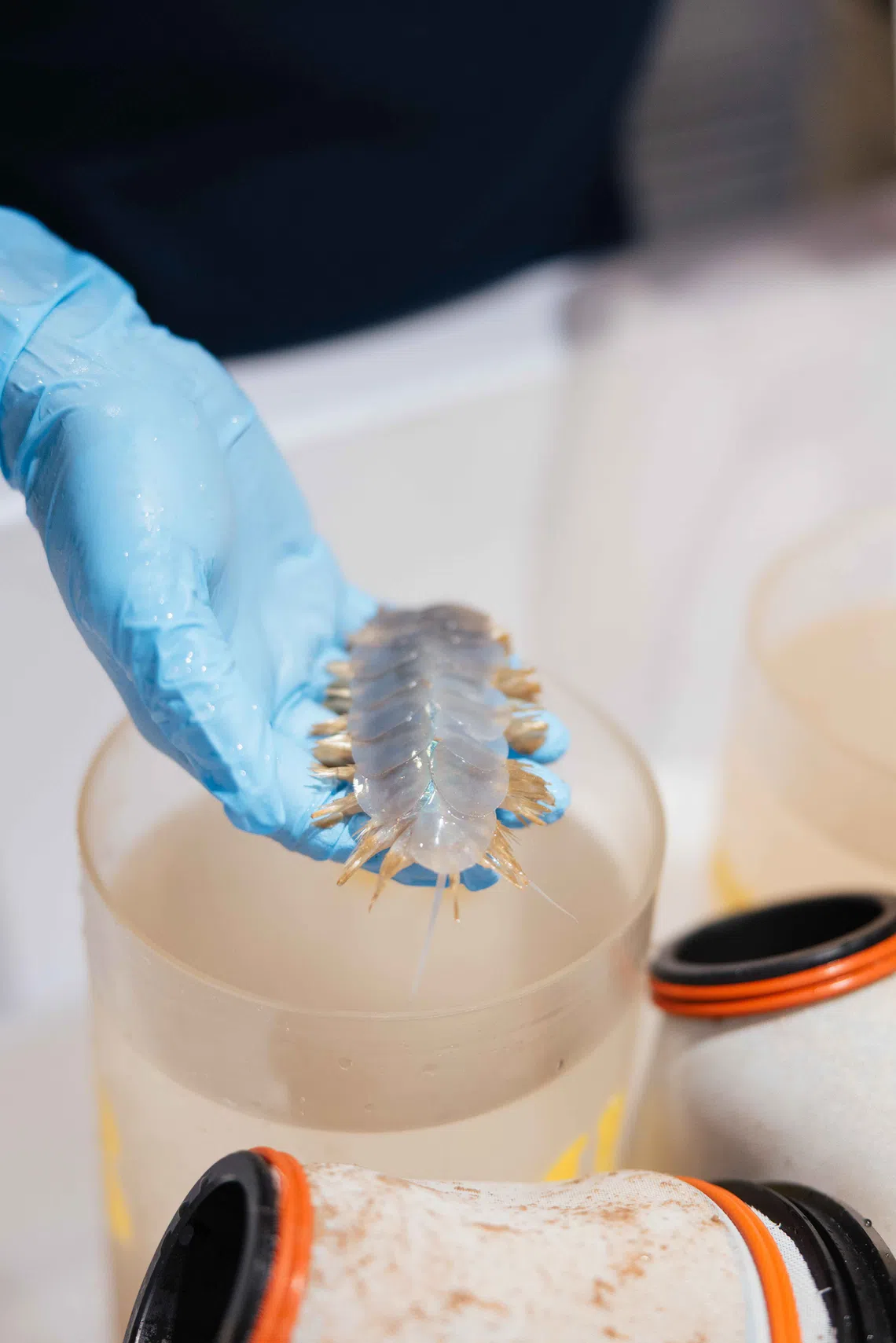
A polychaete, a type of marine worm, collected from the deep sea by the OceanX and NUS expedition.
PHOTO: OCEANX
Co-funded by NUS and OceanX, with the National Research Foundation committing up to $6 million for the research programme, the expedition was first announced by Foreign Minister Vivian Balakrishnan during the UN Ocean Conference in Nice, France, in June.
The voyage marked Singapore’s first major deep-sea scientific expedition since the 2023 adoption of the United Nations Marine Biological Diversity of Areas beyond National Jurisdiction Agreement – otherwise known as the High Seas Treaty – which governs the conservation and sustainable use of marine biodiversity outside national jurisdictions.
Over the next two years, findings from the research will be published, as well as compiled and made public, said the expedition’s chief scientist, Professor Peter Ng, who is an adviser to the Lee Kong Chian Natural History Museum.
Footage and data gathered from this expedition, as well as future expeditions, will be used to produce educational content about the seamount, said OceanX founder and co-chief executive Mark Dalio.
Education about the biodiversity found at such depths is “the most powerful tool” to make people aware of its importance, said Prof Ng.
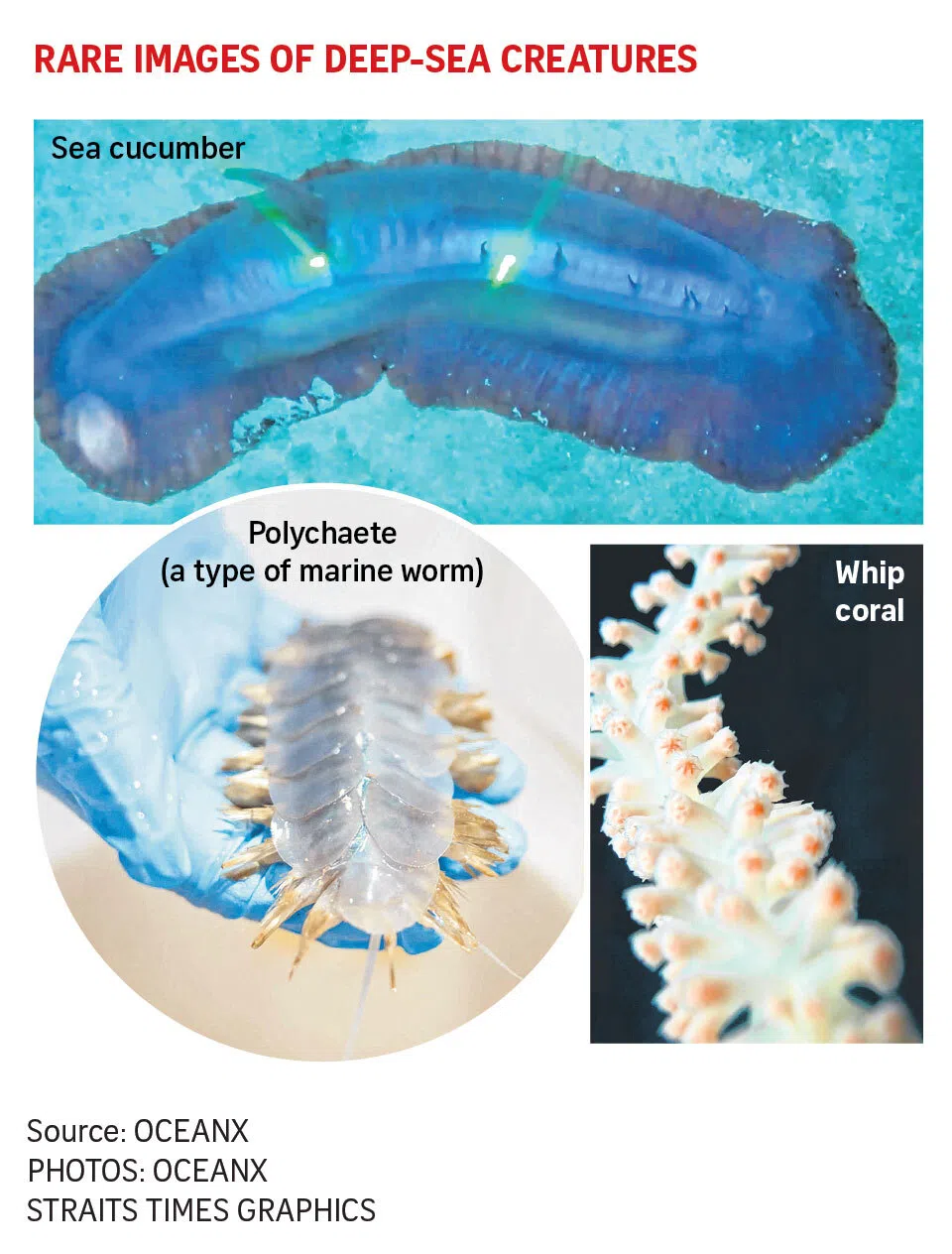
In the longer term, the work by NUS and OceanX could make the case that the area should be conserved, he added.
This would require working with the Australian authorities as the area is between Christmas Island and the Cocos (Keeling) Islands, both of which are Australian territories, and international bodies such as the International Seabed Authority, he noted.
Conservation would preclude deep-sea mining, about which concerns have surfaced, with US President Donald Trump in April signing an executive order to accelerate such mining in both US and international waters.
“If you ask OceanX their stand, they don’t support ocean mining, and I think if you ask most marine biologists, they’ll tell you exactly the same thing,” said Prof Ng.
“On a philosophical basis, most of us prefer that you don’t mess up a place that you don’t understand.”
